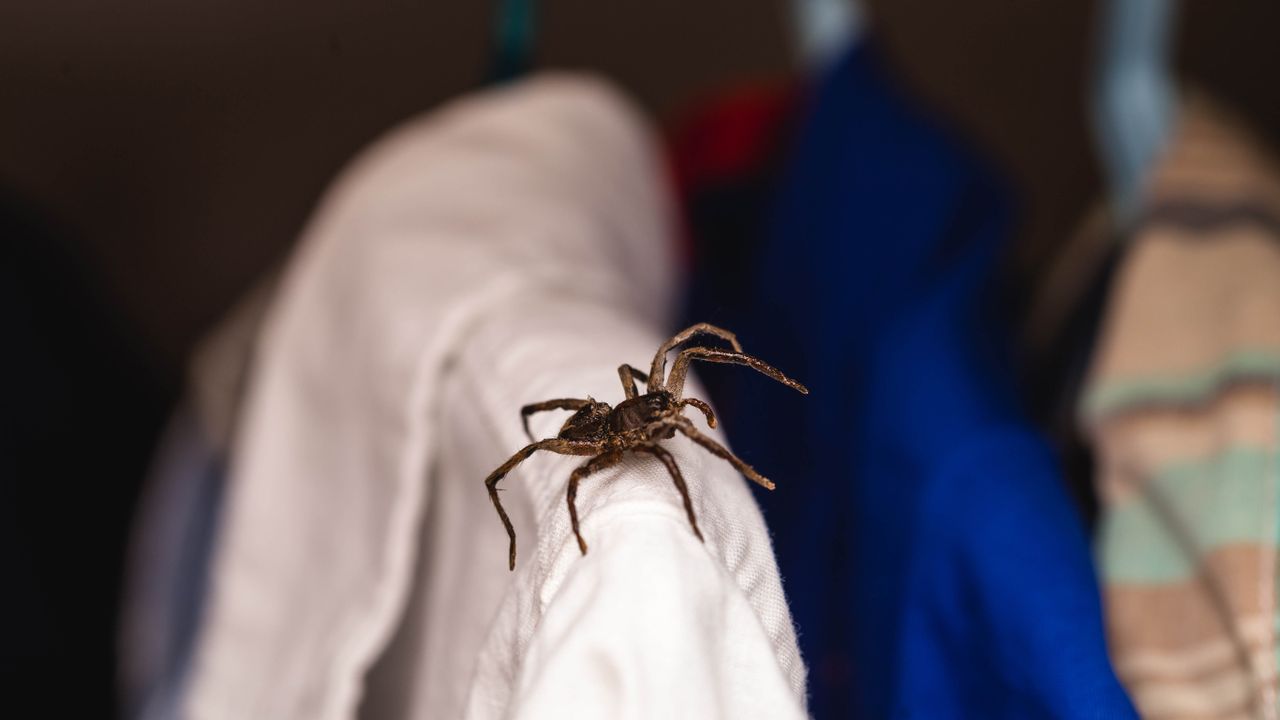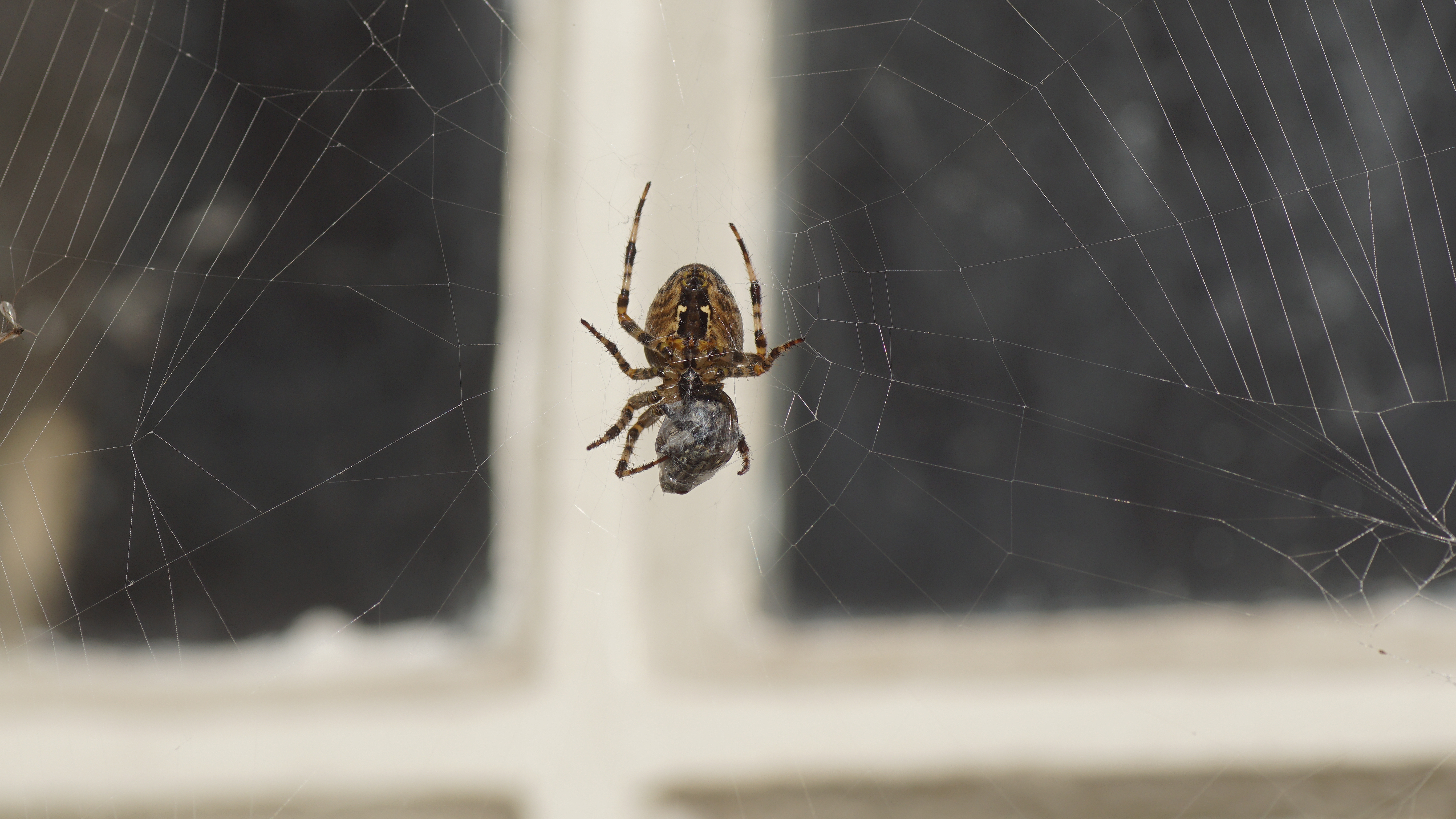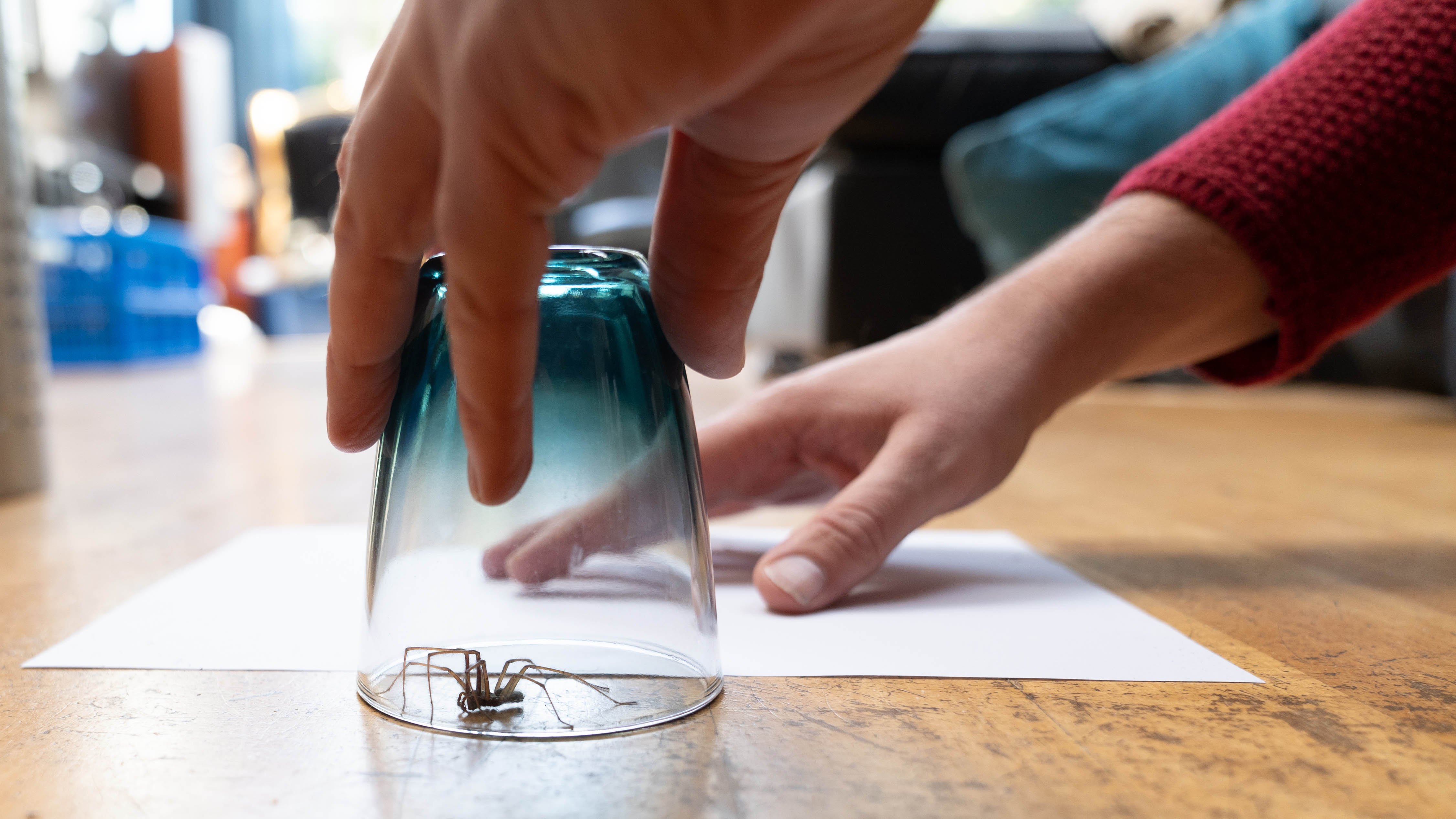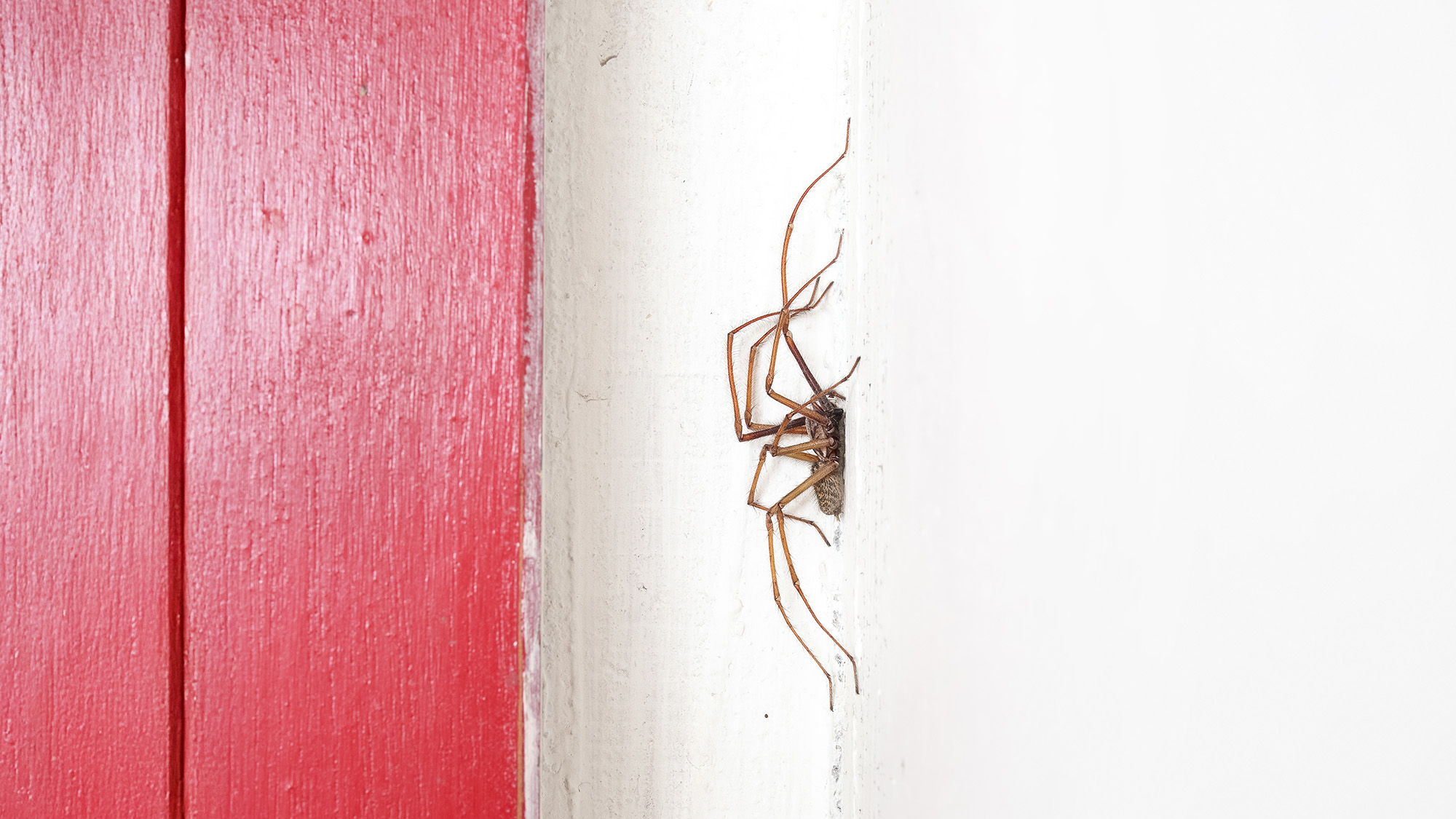
When it comes to dealing with household pests, spiders are seemingly everywhere. Not only do spiders love to hide in your home, but they can leave unsightly cobwebs everywhere — leaving you with extra cleaning. But what happens when you spot a spider and need to quickly remove it? While experts warn against squashing spiders to avoid creating more pest problems, there are ways to safely remove spiders without hurting them. Plus, you'll be doing the eco-system a favor!
So if you want to humanely evict non-venomous spiders from your home during this ‘peak spider season’, here are three quick, expert-approved tips.
1. Guide a spider out of an open window or door

One simple way to safely remove a spider is to guide it outside through an open window or door. There are a few ways to do this, depending on where you find it.
If it’s already near an window, you can find a flat object such as a notebook or folder to block the spider’s path, or allow it to crawl onto it. Then gently give the spider a nudge toward the window or open door.
Additionally, if by an open door and the spider tries to crawl away, put the notebook next to the spider to prevent it from going in the opposite direction.
Alternatively, if the spider is on the floor, you can use a dustpan and brush to gently sweep the spider onto the dustpan. Block it with the brush, before carrying it outside to release via an open door or window.
2. Catch and release the spider

If you can’t guide a non-willing spider outside, you can always go back to basics and try to catch it yourself. “The best and safest method to get rid of a spider is through an easy process of cup-and-paper,” suggests Tony King, pest control expert and owner of The Pied Piper. “I recommend you slowly approach the spider and carefully cover it with the container to avoid scaring or harming it.
Once you trap the spider, press the paper down until it hits the rim of the opening, and then carefully move it outside. Let the spider out in a safe place, like under bushes or near woodpiles, where it will be able to survive and not get back into your home.”
Generally, this is a quick and effective way to safely remove spiders (if you're not too squeamish).
3. Spider traps or catchers

If you don’t want to get close and personal with an eight-legged visitor, you can also try spider catches or traps.
“For those who will not touch or go near spiders at all costs, humane traps are available that provide a no-touch solution,” adds King. “Instead of sticky traps that hurt spiders, humane capture devices work more like little enclosures that enable spiders to enter and be caught without harm.
Some spider vacuums, like the handheld BugZooka or Katcha Spider Catcher, use a gentle suction process to capture them humanely in a chamber. These traps allow you to take the spider outside and release it without ever actually touching it.”
In addition, these traps should be placed in areas where you’ve seen spiders, such as along walls. They are cheap to purchase and offer an alternative to chemical methods.
Another easy option is to simply use a broom handle to allow spiders to crawl on. “If you'd prefer to keep your distance, a long house broom can be used to grab the spider and its web,” suggests Jacob Cohn, A.C.E. COO & Associate Certified Entomologist at Arrow Termite & Pest Control. “Or encourage the spider to climb on, and let you keep a bit of space between you as you move it outside.”
These tools not only provide the safety of the spider but also makes disposal much less intimidating to those who are afraid of touching them.
How to prevent spiders from coming into your home

If you have a phobia of spiders, you’ll need to put preventative measures in place so your home won’t be inviting such pests.
“These are hardly solutions if you have an actual spider problem, not just one accidentally wandering in or carried inside with your pets,” agrees Nicole Carpenter, pest control professional and the President at Black Pest Prevention.
“If it's not just one spider but a real problem, you should always start with sealing gaps around doors, windows, vents, cracks in the foundation and flooring, and replacing torn window screens — spiders can literally use any crack as tiny as a few millimeters to sneak inside.
“Sealing means new spiders and other insects they feed on can't get in, and the only thing left is to get rid of the ones that are already inside. Vacuum everything thoroughly using a hose attachment and don't skip corners, closets, boxes, and under furniture because this is exactly where spiders love to nest and spin webs.”
Of course, if you’re dealing with an infestation or suspect you have venomous spiders, it’s always best to call in the pest control professionals to handle it for you.
Follow Tom's Guide on Google News and add us as a preferred source to get our up-to-date news, analysis, and reviews in your feeds. Make sure to click the Follow button!







